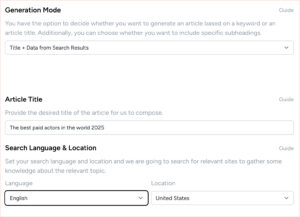In the ever-evolving world of search engine optimization (SEO), staying ahead of the curve is essential for maintaining high search rankings and visibility.
One of the most influential yet often overlooked tools in an SEO expert’s arsenal is Google’s Quality Rater Guidelines. These guidelines, though not an official ranking algorithm, offer a glimpse into how Google evaluates the quality and relevance of web content.
They serve as a manual for the thousands of human quality raters Google employs to assess search results, and understanding them can provide invaluable insights into improving your site’s SEO performance.
In this article, we’ll delve into what these guidelines entail and how they impact your SEO strategies, so you can ensure your website aligns with Google’s ever-stricter standards.
Understanding Quality Rater Guidelines
The Quality Rater Guidelines are a comprehensive manual that Google uses to train human evaluators on assessing the quality of search results. You’ll find that these guidelines help raters understand what makes a webpage trustworthy, relevant, and useful.
They don’t directly influence search rankings, but they shape how Google’s algorithms are designed and refined. By understanding these guidelines, you can optimize your website to better align with what Google values.
Focusing on user intent, content relevance, and overall site quality will help your site perform better. The guidelines offer insights into what Google considers a high-quality page, giving you a roadmap for improving your content and user experience.
Importance of E-A-T in SEO
E-A-T, which stands for Expertise, Authoritativeness, and Trustworthiness, plays a crucial role in how Google evaluates the quality of your website.
By demonstrating expertise, you show that the content on your site is created by knowledgeable individuals.
Authoritativeness is about establishing your site as a go-to source within your niche, while trustworthiness ensures that users can rely on your site for accurate and honest information.
If your website lacks E-A-T, it could be perceived as unreliable or irrelevant.
Make sure your content is written by experts, backed by credible sources, and free of errors. This can significantly improve user trust and engagement.
Additionally, maintaining a transparent and professional online presence will help build your site’s authority and trustworthiness in the eyes of both users and Google.
Impact on Search Engine Rankings
Understanding the impact of Google’s Quality Rater Guidelines on search engine rankings is crucial for any effective SEO strategy. These guidelines help assess the quality of web pages, influencing how Google’s algorithms rank your content.
By focusing on E-A-T (Expertise, Authoritativeness, Trustworthiness), you can ensure your site meets Google’s standards. High-quality content that aligns with these guidelines can significantly boost your rankings.
Google’s raters don’t directly affect your site’s ranking, but their feedback helps refine the algorithm. This means if your content aligns with what raters value, you’re more likely to see positive ranking changes.
Ignoring these guidelines can result in lower rankings, as Google’s algorithm increasingly prioritizes high-quality, trustworthy content. So, aligning with these standards is essential for SEO success.
Implementing Guidelines for SEO Success
To implement Google’s Quality Rater Guidelines effectively, focus on creating high-quality content that showcases your expertise, authoritativeness, and trustworthiness.
Start by thoroughly researching your topics and providing accurate, well-sourced information. Use clear, concise language and avoid jargon that might confuse your readers. Additionally, ensure your website’s design is user-friendly and mobile-responsive to enhance user experience.
Next, build backlinks from reputable sources to boost your site’s authority. Regularly update your content to keep it relevant and useful. Incorporate positive user feedback and reviews to build trust.
Lastly, monitor your site’s performance using analytics tools to identify areas for improvement. By adhering to these guidelines, you’ll enhance your SEO success and improve your site’s visibility in search results.
How often are Google’s Quality Rater Guidelines updated?
Google updates its Quality Rater Guidelines periodically.
Changes aim to improve search results’ quality and relevance.
Keeping track of updates is crucial for understanding Google’s current standards and optimizing your website accordingly.
What is the process for becoming a Google Quality Rater?
To become a Google Quality Rater, you must apply on Google’s job site.
You must pass an exam that tests your knowledge of rating guidelines.
You must demonstrate your ability to evaluate search results accurately based on set criteria.
Are there any penalties for not adhering to Google’s Quality Rater Guidelines?
If you don’t follow Google’s Quality Rater Guidelines, your site may face penalties like decreased rankings or removal from search results.
It’s crucial to adhere to these guidelines to maintain visibility and credibility.
Conclusion
So, remember to keep Google’s Quality Rater Guidelines in mind for your SEO strategy.
By understanding the importance of E-A-T, you can improve your search engine rankings.
Implementing these guidelines can make a significant impact on your website’s success.
Stay updated on the latest changes and best practices to ensure your SEO efforts are effective and aligned with Google’s standards.





